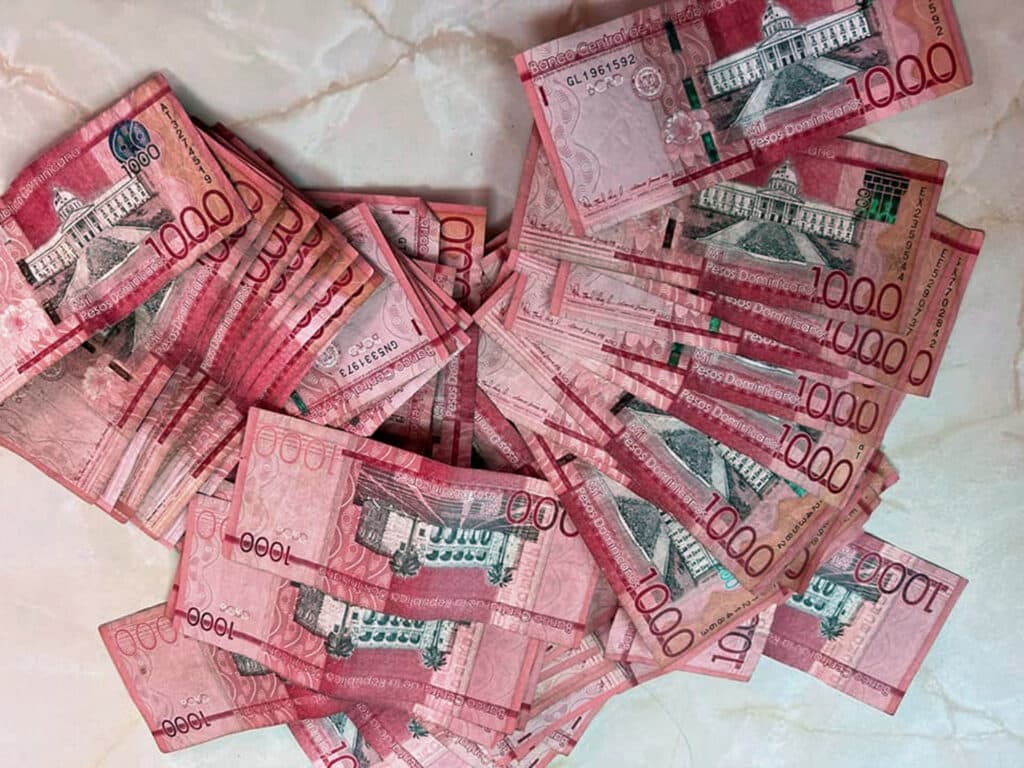
If we joke about needing little more than love and a fishing pole to subsist while cruising, it’s only to underscore the fact that funds are necessary to sustain nomadic adventures. But dealing with money while cruising is different. I had forgotten how different until we finished our circumnavigation in Mexico. With proximity to the United States making visits easy, the differences came into focus.
Everyday Transactions
The biggest difference recent trips stateside impressed on me: Little actual currency is used in everyday transactions in the United States. Almost every payment is made with a credit or debit card, or even just a swipe with a phone.
By contrast, as sailors going around the world, we’ve predominantly paid for goods and services in cash—actual paper money and coins.
That pile of cash above? It’s what our friends on Majestic needed to depart the Dominican Republic: check-out fees, dock fees, all in cash.
You don’t need to stockpile currencies on board to exchange on arrival, and you don’t need to change money ahead of time. In all but two places, Papua New Guinea and St Helena, we were able to get local currency from ATMs. The machines really are just about everywhere, although sometimes island time may apply to availability hours.
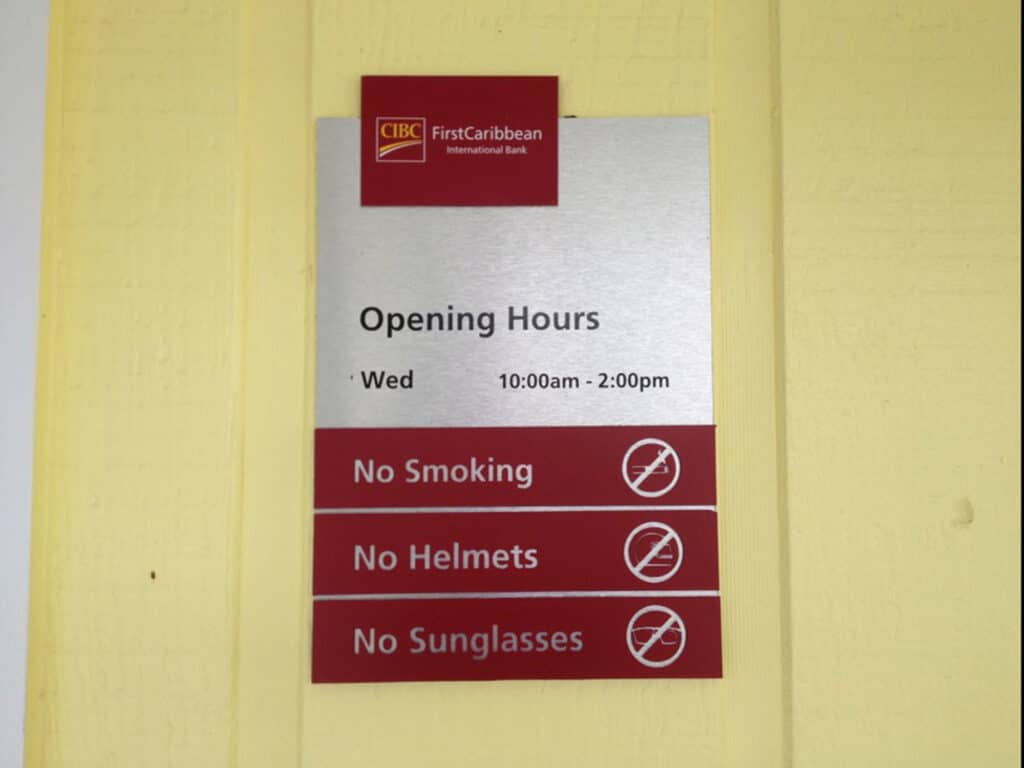
Another exception proving the rule: A member of our coaching community recently found that in Argentina, costs to withdraw from an ATM were so high that he got a better deal sending himself money via Western Union.
If you’ll be in a region for a while, does it help to have a local bank account? Not really. We see some cruisers retiring to life aboard in Mexico doing this, but it’s rare for cruisers to have local bank accounts. We just crossed into five years since sailing back into Mexico and have never felt the need.
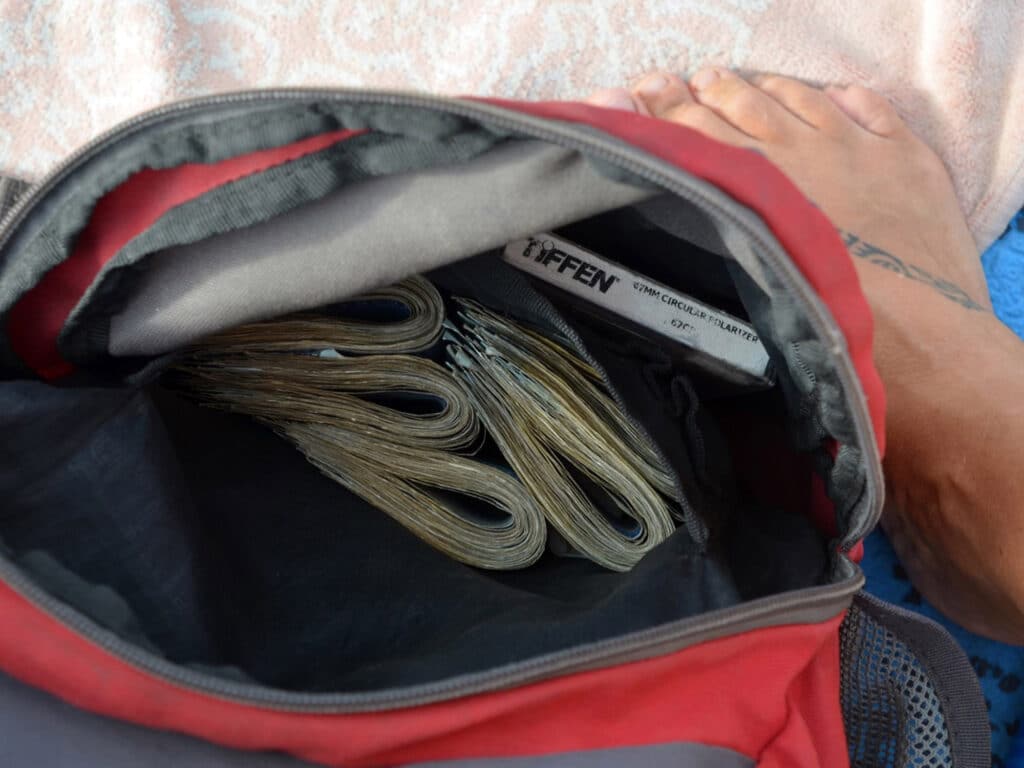
In Madagascar, we had to make multiple ATM withdrawals to buy diesel because the largest bill at ATMs was worth less than $2, and there were low transaction limits. The aftermath looked like a stash peeking out of my backpack pocket. I felt illicit, carrying that around, but it’s just cruising life.
Debit Cards
Are there better banks for cruisers to use for ATMs? Many folks rave about travel-friendly banks such as Schwab, Capital One, Fidelity, USAA or others that reimburse ATM fees. These are great options, especially if you’re in regions with high fees (I think we paid $9 per withdrawal in Phuket, Thailand). Other cruisers like to stick with digital-only neobanks.
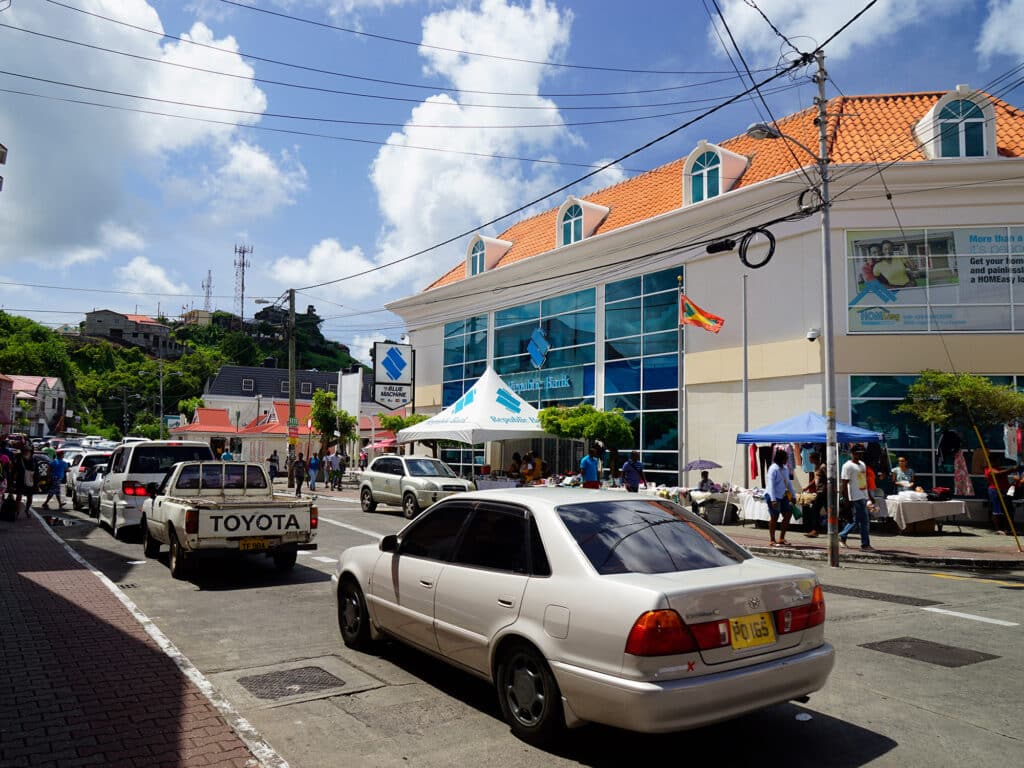
We made an unlikely choice: staying with our hometown bank, which has a handful of branches in a semi-rural county in Washington state. Our choice means we pay a little more in ATM fees because they’re not reimbursed, but if we need help with anything—last week, it was instructions for a wire transfer—a call to the branch around the corner from our old house on Bainbridge Island connects me to a person who actually knows us.
I value this personal touch highly. There is no getting lost in the robo-response of a bigger bank, no cumbersome identify verification holding things up if we need an expired (oops) debit card shipped out. And, I love the human connection. Last year, this bank contacted me first instead of turning off our card when a Mexican ATM tripped a fraud flag. That could have been a hassle.

When we were back in town, we could give ever-ready branch greeter Rex the corgi that biscuit he’s awaiting, as we did above when migrating our daughters’ accounts in January. Rex, sadly, died last month, but I’m told there’s an energetic puppy now working the biscuit game.
A few other debit-card tips: Some countries are more likely to have ATM-skimming fraud than others; ATMs attached to a bank branch are almost always the safest option. If the ATM asks you to accept its conversion rate, it is almost certainly a bad deal; decline, and use the conversion your bank will do automatically. Check your withdrawal limit; your bank may increase it with a phone call. And, ask if replacement cards can be sent internationally, or only to a home-country address.
Travel-Friendly Credit Cards
As much as our life afloat has relied more on cash for everyday needs, we still need credit cards. In regions with wealthier residents or progressive technology, credit cards may be easier to use than cash (hello, Mediterranean sailors).
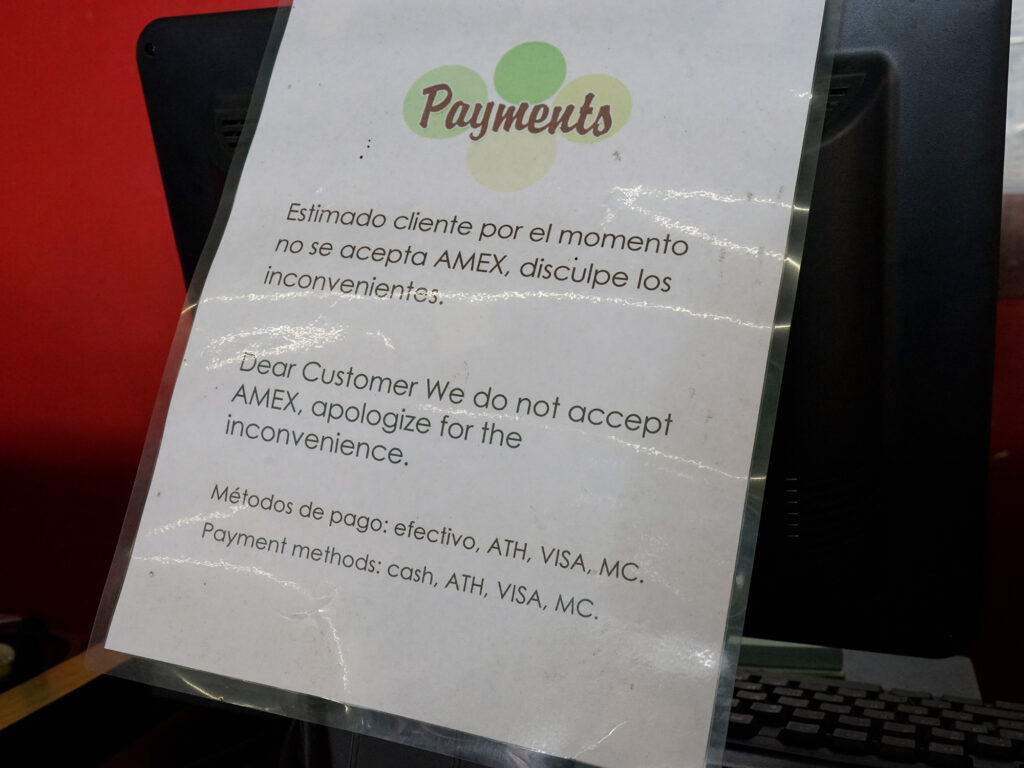
Credit cards can’t add a markup to currency exchange rates, but they can charge fees. You need to find out if foreign transaction fees are charged with your current cards. In the United States, Chase Sapphire and Capital One have cards without foreign transaction fees.
We usually keep two credit cards: one in the wallet for everyday needs, the other in a safe place on the boat. The latter is used for routine fees, such as an internet service payment, so if a wallet is lost or stolen, those payments continue uninterrupted.
A few other credit-card tips: Visa and Mastercard are accepted globally; we wouldn’t bother with anything else. Make sure you offset expiration dates by a wide enough margin, especially if you only have two cards. And, call before departure to alert the bank that you will be using the card internationally; this will reduce the chances of having it flagged for fraud.
Sending Money
Zelle, Venmo, PayPal, Cash App, Wise, Xoom, Payoneer: There are so many ways to move money around. But which methods work with cruising?
Our recent proximity to the United States hammered home how common peer-to-peer payments are now. Whatever service you use, watch those terms. After more than a year of use, Venmo locked us out (and wouldn’t transfer our balance) because we had spent too much time outside the United States.
We have used PayPal for years from around the world to make some payments (such as to our agent in the Maldives) or to receive payments. For larger amounts, Payoneer, XE.com, or wire transfers from your bank can be good options. When we bought our cool new stove from the UK last year, it was easy to use Wise, drawing from our bank account in US dollars. Fees were so reasonable, I don’t remember what they were.
Cash On Board
Before setting off across the Pacific, we had a couple thousand dollars stashed, just in case. Several years later, we had to nearly force ourselves to use it. It came in handy in Papua New Guinea, because US dollars (or Australian dollars) were preferred in the place where we purchased diesel. Since then, we’ve kept lower cash reserves on board.
Some cash-stash tips: Whatever you tuck away, keep it in smaller bills, ideally no larger than $20. These denominations are less likely to be counterfeit. And, benchmark the amount you stash at the cost to fill your fuel tanks at the highest regional rate, plus a buffer.
Fear of counterfeiting is real: I remember watching a frustrated tourist who arrived with a cache of hundred-dollar US bills, only to be turned away from changing them to ringgit at a bank in Malaysia. Too risky for the bank.
Is managing money while cruising a big problem? No, not at all. Planning around these pitfalls can ease your experience.
TOTEM TALKS: Standing Rigging
Join us Sunday, April 30, at 4:30 PT / 7:30 ET to talk about standing rigging fundamentals. We’ll cover basics, tuning and troubleshooting—high points that can be covered in the space of an hour, anyway.
If you have particular questions, send them in advance. And of course, register here to attend








